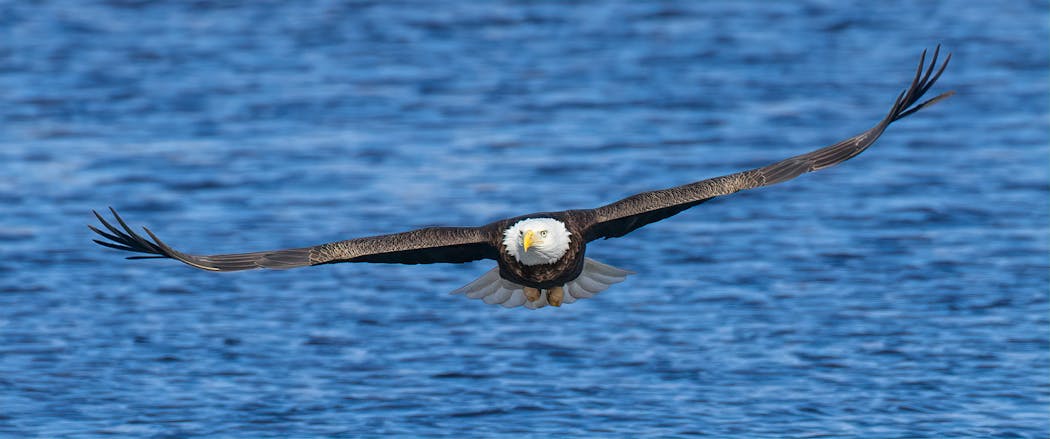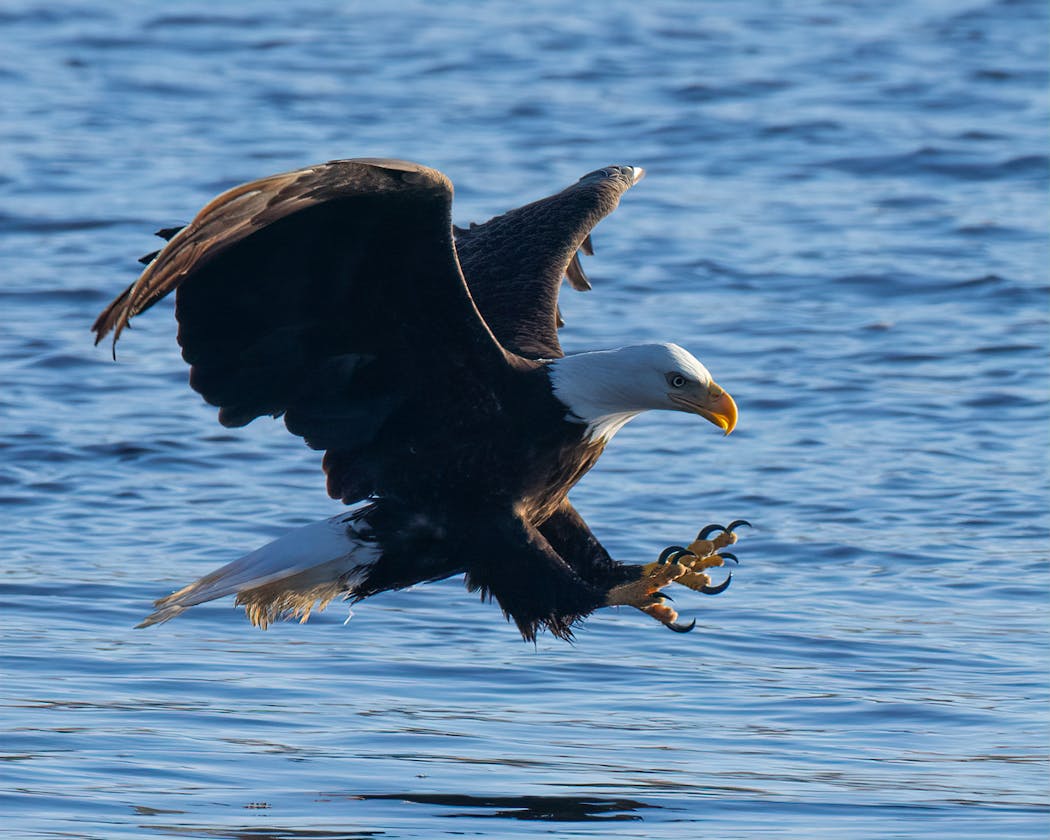How often have you heard the phrase "bird brain," a classic belittlement of avian mental abilities? The truth is that over the past five decades or so, studies of avian intelligence have shown that birds are much smarter than we thought.
How smart? Bird brains are very different from mammal brains, which led to the idea that birds simply lacked the equipment for thinking. However, beginning in the 1960s, bird researchers began noticing that birds are capable of astonishing feats of innovation, creating novel solutions to challenges in their lives.
How about the average chickadee, hiding thousands of bits of food around its territory each fall, creating a mental map that guides it to retrieve every bit over the winter? Or a red-tailed hawk riding an ice floe down an open river, then flying back up to do it again and again, just because it's fun?
No 'bird brains' here
Every day in many ways, birds demonstrate that they're brainy beings. Birds possess a navigation system that's better than any GPS device, as they make their long migrations. They're great problem solvers, especially in avoiding the many predators they encounter in a day. And some even use cunning: Blue jays hide nuts for later eating, but if the hiding jay discovers another jay was watching, it retrieves its nut to hide it out of sight.
Until about 50 years ago, we humans believed that birds are primarily instinctual creatures, more like flying robots than cognitive beings. But their amazing feats of navigation, quick thinking on the fly and even guile while stashing food are not the actions of animals ruled only by instructions hard-wired in their brains.
Instead, birds process masses of information with lightning speed as they move through their fast-paced lives. They learn and hone their knowledge and skills, adapting their behavior to new situations. This is a classic definition of intelligence, and yet in the past it has been hard for humans to grant that the birds around us are smart.
Birds do learn and they learn quickly. They have to, because flight brings them into new situations at an accelerated pace, much more so than mammals' slower, terrestrial lives do. As birds fly, even a short distance from bird feeder to tree, their brains are analyzing sensory inputs at a rapid rate as they scan for predators, gauge wind speed, measure the distance ahead, plan for landing, and much, much more.
And they do this with brains that look nothing like ours.
Garlic vs. lasagna
"Bird brains have a radically different architecture from ours," writes Jennifer Ackerman in her fascinating book, "The Genius of Birds." "Their brains are organized more like a garlic bulb, while human brains are more like lasagna."
Some even argue that birds' densely packed neurons and the short distances between synapses in the "garlic bulb" may predispose birds to think more quickly than mammals can, who have neurons spread throughout their layered brains.
It's been a challenge for those studying avian intelligence to come up with tests that truly measure bird smarts, and for years the gold standard had been assessing birds' use of tools to gain food. But this had many limitations.
Avian researcher Nathan Emery says that tool use is very rare among birds, not due to lack of intelligence but because tools simply are not necessary for most birds to live successful lives. More recent research has involved observations out in the field, as birds go about their daily lives.
A basic question might be why did it take us so long to see that birds are smart?
Maybe because we had a theory and it blinded us to what was really going on. Turn the question around and you might well ask why we don't see birds acting stupidly. And that's because there's simply no room for dumb behavior in the natural world — birds that don't think quickly aren't going to be around for very long.
Not all birds are Einsteins, however. Just as in humans, the bird world holds a great deal of variation between species (crows are smarter than pigeons, for example) and even between individual members of a species.
Birds are going to need a lot of brainpower for the dramatic changes that lie ahead, as our planet warms, habitats change and the climate increasingly becomes unpredictable. Those birds that best use their brains to adapt quickly to this changing world will be the most successful.
St. Paul resident Val Cunningham, who volunteers with the St. Paul Audubon Society and writes about nature for local, regional and national newspapers and magazines, can be reached at valwrites@comcast.net.
Division of labor
Carrol Henderson, now retired from the DNR's Nongame Wildlife Program and a lifelong observer of birds, watched a pair of crows in springtime doing a very smart thing. One crow stood high in a maple tree, while another crow stood on the lawn below. The treetop crow snipped off twigs and dropped them to the ground, where the other crow picked them up and flew off, he assumes to build a nest. The process was repeated several times. "How did they figure out that interesting division of labor?" he wondered.
Door-opening swallows
Barn swallows, among the most agile of birds, figured out how to turn a human-made environment to their own advantage. At a Home Depot store in Maplewood, motion-activated sensors open the doors into the lumberyard. Several years ago, a pair of swallows found that flying in tight circles in front of the sensors caused the doors to open. They repeated the door-opening flutter many times a day as they built their nest on a pipe near the ceiling, then even more frequently as they brought food to their warm and dry brood. And then the entire family flew out the doors one summer's day.
Coordinated hunt
Jeff Siverhus of Warroad, Minn., described a scene he and friends observed while fishing from a boat on Lake of the Woods in summer: "We were watching two gulls in the process of courting, when we saw two mature bald eagles cruising in low, about 5 feet off the water. It appeared that they'd each picked a target, since the gulls were about 20 feet apart and not paying attention to anything outside of each other. The eagles struck simultaneously, with each grabbing a gull."
Reading list
This column only touched on the whole range of avian intelligence, especially in the realms of migration, communication and play. The books listed below give a broader view of bird smarts:
"The Genius of Birds," by Jennifer Ackerman, Penguin Press, 2016
"The Bird Way: A New Look at How Birds Talk, Work, Play, Parent, and Think," by Jennifer Ackerman, Penguin Press, 2020
"Bird Sense: What It's Like to Be a Bird," by Tim Birkhead, Walker Publishing, 2012
"Bird Brain: An Exploration of Avian Intelligence," Nathan Emery, Princeton University Press, 2016

The 5 best things our food writers ate this week

A Minnesota field guide to snow shovels: Which one's best?

Summer Camp Guide: Find your best ones here

Lowertown St. Paul losing another restaurant as Dark Horse announces closing






